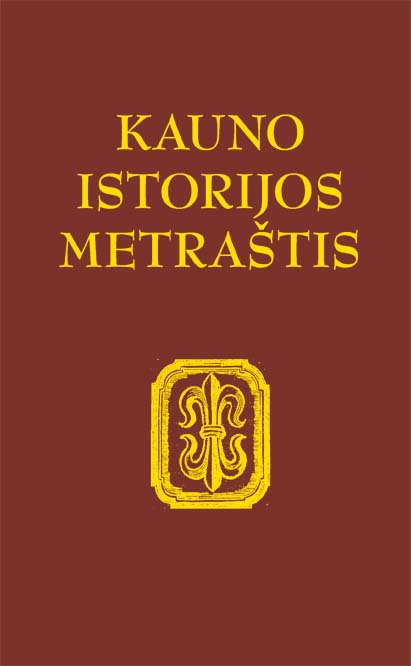Jiezno parapija XVII a.
Jieznas Parish in the 17th Century
Author(s): Vaida KamuntavičienėSubject(s): Christian Theology and Religion, Cultural history, Local History / Microhistory, Modern Age, 17th Century
Published by: Vytauto Didžiojo Universitetas
Keywords: Jieznas; Pac; Jieznas Parish; GDL;
Summary/Abstract: The Jieznas Catholic Church was erected on the initiative of the Pac family. In 1633, Stephan Pac, a GDL deputy at the time, bought the Jieznas manor from the Evangelical Reformed Hołowczynski and expelled the Reformed priest from the wooden church and appointed Adam Jurgiewicz, a Catholic. In 1640, in a will made by the pastor of Jieznas, S. Pac, confirmed the manors of Sobuva and Andriūnai and ordered his descendants to build a brick church. This instruction was carried out by his son Krzysztof Zygmunt Pac, who in 1655 confirmed and expanded his father’s foundation. A school and a hospital were planned. The latter was given an annual allocation of cereal, etc. – a tribute from the manor of Jieznas – which was supposed to be enough to maintain 6 beggars. A separate land provision was made for the organist. In 1676, a foundation of two mansionarists was approved, and they were given an estate worth 5,000 Polish gold currency. In the 17th century, Adam Jurgiewicz (1633–1671), Michał Kazimierz Wisocki (1672–1689) and Kazimierz Kosztowt (from 1689, mentioned in 1700) ruled in Jieznas parochial church. At the same time, Adam Jurgiewicz was the pastor of Darsūniškis and the dean of Kaunas; he left a collection of about 30 books for the parish of Jieznas, describing his education and theological preparation for pastoral duties. When this Jieznas church burned down in 1655–1661, during the war with Moscow, services were transferred to the rectory, with a separate room designated for that purpose. The construction of the brick church in Jieznas started around 1645, the services were moved to it, and it was consecrated in 1670 with the title of Archangel Michael, although construction was not completed until the next decade. The church has three wooden baroque altars, the titles of which reflect the main 17th century tendencies of piety, and the saints of the Pac family. Here hung a painting of K. Z. Pac’s patron saint Christopher, as well as an image of Mary Magdalene de Pazzi. St. Teresa of Avila’s painting reflects the Pac family’s interest in the spirituality of the barefoot Carmelites. The Altar and Brotherhood of the Rosary testified to the development of the Rosary and Dominican piety in the Grand Duchy of Lithuania. In the church of Jieznas were hung portraits of K. Z. Pac himself and his wife. Thus, the nobles, who had contributed much to the beautification of the church in Jieznas, imprinted on the interior of the church a number of signs about themselves and their priorities. The founder K. Z. Pac ordered the pastor of Jieznas and the mansionarists to offer two Masses every day for his late parents, and – after his death – for himself and his wife, in honour of the Virgin Mary. The instructions for prayers were to be given for each day. For example, on Wednesdays there was the Way of the Cross, and so on. In the 17th century, Visitors rebuked the pastors of Jieznas regarding some liturgical matters, the cleanliness of the church in Jieznas, the administration of the sacraments in accordance with all the Church’s instructions, the registration of parishioners, the proclamation of church ordinances, and so on. In the 18th century, complaints regarding material matters increased: the church equipment was old and needed to be repaired. Compared with other parish churches in the Grand Duchy of Lithuania in the 17th century, the parish of Jieznas is distinguished by the greater attention of the founders to the material situation of the church (at that time the GDL was dominated by wooden churches) and to the pastorate, especially the exceptional foundation provided for the maintenance of two additional priests (mansionarists). The founders were devout practising Catholics, who introduced to the church in Jieznas the main principles of the then baroque spirituality of the Grand Duchy of Lithuania – devotion to Mary, the Rosary, the Way of the Cross, etc.
Journal: Kauno istorijos metraštis
- Issue Year: 2022
- Issue No: 20
- Page Range: 217-234
- Page Count: 18
- Language: Lithuanian

